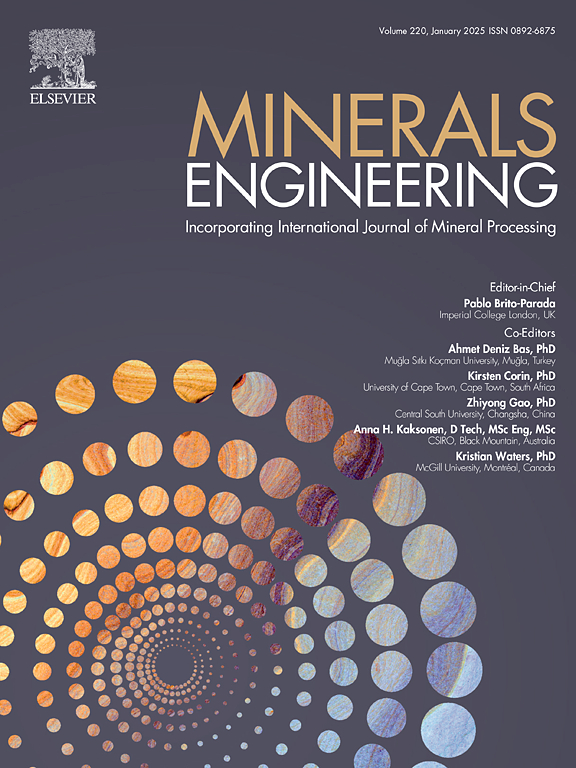Selective leaching of Ga and Ge from zinc powder replacement residue and determining influential role of magnetic field with an ultrasonic field
IF 4.9
2区 工程技术
Q1 ENGINEERING, CHEMICAL
引用次数: 0
Abstract
Gallium (Ga) and germanium (Ge) are rare metals crucial for national applications in semiconductor and military sector. The metals are usually leached from zinc powder replacement residue (ZPRR) produced in the wet zinc refining process. In this study, Ge and Ga were leached from sulfuric acid with the application of a strong magnetic field and an ultrasonic field. The leaching mechanism in the strong magnetic field and ultrasonic field was studied using various characterization techniques such as XRD, SEM, XPS, FT-IR, etc. Kinetic studies show that the leaching of Ga and Ge from ZPRR is influenced by a combination of surface chemical processes and diffusion of reactants. When under the influence of 10 T magnetic field, the apparent activation energy for Ga and Ge were 30.44 kJ/mol and 30.97 kJ/mol, respectively. When the 10 T strong magnetic field was compound with a 360 W ultrasonic field, the apparent activation energy for Ga and Ge fell to 24.70 kJ/mol and 20.43 kJ/mol, respectively. Through XPS, FT-IR, XRD, it was found that the strong magnetic field can influence and suppress the hydrolysis of Fe(OH)3 during the reaction process and can also alter the existence form of Si(OH)4. Moreover, the combined ultrasonic field can also break the ZPRR encapsulating structure, intensifying the boosting impact of the magnetic field. The optimal leaching parameters were discovered by one-factor experiments and response surface methodology (RSM). This investigation proposes a novel and effective leaching technique for the extraction of Ga and Ge from ZPRR, while concurrently mitigating the environmental risks associated with ZPRR processing.
求助全文
约1分钟内获得全文
求助全文
来源期刊

Minerals Engineering
工程技术-工程:化工
CiteScore
8.70
自引率
18.80%
发文量
519
审稿时长
81 days
期刊介绍:
The purpose of the journal is to provide for the rapid publication of topical papers featuring the latest developments in the allied fields of mineral processing and extractive metallurgy. Its wide ranging coverage of research and practical (operating) topics includes physical separation methods, such as comminution, flotation concentration and dewatering, chemical methods such as bio-, hydro-, and electro-metallurgy, analytical techniques, process control, simulation and instrumentation, and mineralogical aspects of processing. Environmental issues, particularly those pertaining to sustainable development, will also be strongly covered.
 求助内容:
求助内容: 应助结果提醒方式:
应助结果提醒方式:


